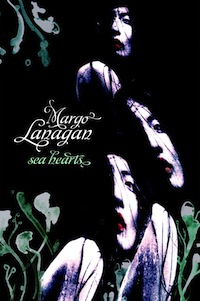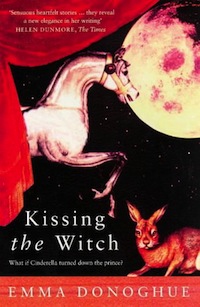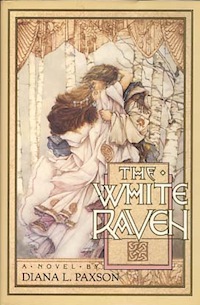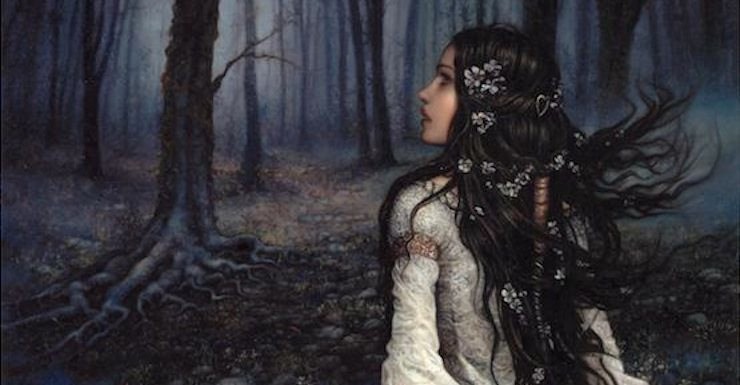Witches come in all shapes and sizes, ages, races, abilities and skills. The thing they have in common? Whether they’re ‘white’ or ‘black’, they excite fear because they’re powerful; they’re not obedient or biddable. A wicked witch is kind of boring, however, so when I wrote Of Sorrow and Such I wanted Patience to be someone who’s neither entirely good nor evil, but a human being in full. Following on from that idea, here are some witches who are more than the cardboard cut-outs you put on your house for Halloween.
Sea Hearts by Margo Lanagan (2012, Allen & Unwin)
 Australia’s Margo Lanagan is no stranger to weaving spells (although she’ll claim they’re only ‘words’) and her Misskaella Prout in Seahearts is a witch of a very particular stripe. Stout and strange-featured, it seems she’s got some selkie blood in her veins and this gives her power over the women of the sea, those who live in the bodies of seals. She’s not well-treated, our Misskaella, and when the men of Rollrock Island come to her looking for wives who are more obedient and biddable, she finds a way to get her own back, though it’s a long and terrible game she plays.
Australia’s Margo Lanagan is no stranger to weaving spells (although she’ll claim they’re only ‘words’) and her Misskaella Prout in Seahearts is a witch of a very particular stripe. Stout and strange-featured, it seems she’s got some selkie blood in her veins and this gives her power over the women of the sea, those who live in the bodies of seals. She’s not well-treated, our Misskaella, and when the men of Rollrock Island come to her looking for wives who are more obedient and biddable, she finds a way to get her own back, though it’s a long and terrible game she plays.
After she draws the selkie-wives from the waters, they live on the land as spouses and mothers, docile and unhappy, wanting only to return to the oceans. The human women flee the island, leaving the men, their magical wives, and sons brought up on the milk of their mothers’ misery. Misskaella has had her own tragedies, her own agonies, and it’s made her not a little spiteful, which we can perhaps understand, but the consequences of her actions are more far-reaching and destructive than she could have foreseen … or perhaps not.
Told from six points of view, the much-awarded Seahearts is a powerful examination of relationships between men and women, men and men, women and women, and parents and children, viewed through the lenses of sorcery, selkies and the sea. It’s Lanagan at her incisive, wicked, witchy best.
Kissing the Witch by Emma Donoghue (1997, HarperCollins)
 Okay, so strictly speaking it’s not quite a novel, but hey! tomayto, tomahto − let’s call it a mosaic and be done. Donoghue is better known as a Big L literary author, but Kissing the Witch is firmly in fairy tale territory.
Okay, so strictly speaking it’s not quite a novel, but hey! tomayto, tomahto − let’s call it a mosaic and be done. Donoghue is better known as a Big L literary author, but Kissing the Witch is firmly in fairy tale territory.
This books contains thirteen story-chapters, twelve re-worked fairy tales and one original, which fit together like Russian nesting dolls. Each begins with the heroine’s journey and at some point introduces another character, who in a traditional fairy tale would be the antagonist, but here presents as someone not unlike the protagonist. By the end, the wicked stepmother, rival, lover, stepdaughter, offers her own history, which leads to the next instalment. The opening tale is a version of “Cinderella”, in which the fairy godmother figure is asked how she came to be who she is. Her reply is ‘Will I tell you my own story? It is a tale of a bird.’ This then flows into a re-working of “Bluebeard”, which in turn becomes “Beauty and the Beast”, then “Snow White” and so on, until we’ve walked in the shoes of shiny heroines and wicked witches all of whom now look very different.
The final story breaks the frame: it’s not based on a recognisable traditional tale, but uses elements from all of them to create something unique. Though she prefers a life of solitude, the narrator is a witch who is constantly visited by supplicants seeking what they think are spells and interventions. The witch is fairly judgemental of such folk, yet she ultimately finds herself caught in a dilemma just like those she’s scorned: she falls in love with a young woman, exclaiming, ‘I had got the story all wrong. How could I not have noticed that she was beautiful?’
Donoghue plays ingeniously with narratives, her re-imaginings are beautiful and brilliant, the language is exquisite and the writing elegant. And one of my favourite things is the way she refers everything back to the oral tradition of storytelling with her last line: ‘This is the story you asked for. I leave it in your mouth.’
Dreamer’s Pool: Blackthorn and Grim 1 by Juliet Marillier (2014, Macmillan)
 Set against the backdrop of Ancient Ireland, Dreamer’s Pool is the first book in the always excellent Juliet Marillier’s Blackthorn and Grim series. The tragic healer, Blackthorn, and her silent companion, Grim, have recently escaped from certain death at the hands of the Chieftain Mathuin, due to the intercession of a Fae benefactor. They’ve settled in the Dreamer’s Wood on the outskirts of Winterfalls, where Prince Oran of Dalriada is awaiting his bride-to-be. The price of Blackthorn’s freedom is this: in true fairy tale tradition, for the next seven years she must help and heal anyone who comes to her − and she must also set aside all thoughts of revenge against Mathuin, though he destroyed everything dear to her.
Set against the backdrop of Ancient Ireland, Dreamer’s Pool is the first book in the always excellent Juliet Marillier’s Blackthorn and Grim series. The tragic healer, Blackthorn, and her silent companion, Grim, have recently escaped from certain death at the hands of the Chieftain Mathuin, due to the intercession of a Fae benefactor. They’ve settled in the Dreamer’s Wood on the outskirts of Winterfalls, where Prince Oran of Dalriada is awaiting his bride-to-be. The price of Blackthorn’s freedom is this: in true fairy tale tradition, for the next seven years she must help and heal anyone who comes to her − and she must also set aside all thoughts of revenge against Mathuin, though he destroyed everything dear to her.
What she wasn’t expecting was for Prince Oran to come seeking her help, and certainly not the problem he presents. He’s exchanged letter with his betrothed for some time and she seemed to be perfect for him: learned and kind. But though the woman who arrives for the marriage is as beautiful as promised, she’d also both less and more than he bargained for. As the wedding approaches, Blackthorn and Grim are obliged to look into the mystery of the young woman’s strange and brutal behaviour. To complicate matters, their own mingled and messy pasts influence their actions not always for the best; there’s a war on the way, and danger darkening the horizon.
Marillier provides, as ever, superb prose that crackles with energy and magic and style. The characters are complex and tragic, wretched and compelling, with their own histories always bubbling terribly close to the surface and colouring how they see matters − especially the heartsore and bitter Blackthorn.
The White Raven by Diana L Paxson (1988, New English Library)
 This reworking of the Drustan and Esseilte (Tristan and Iseult) legend remains one of my favourites. Told from the point of view of Esseilte’s cousin, Branwen, it takes the reader through a complex narrative of politics and love, magic and revenge.
This reworking of the Drustan and Esseilte (Tristan and Iseult) legend remains one of my favourites. Told from the point of view of Esseilte’s cousin, Branwen, it takes the reader through a complex narrative of politics and love, magic and revenge.
Esseilte is the daughter of Ireland’s High King and his wife Queen Mairenn; Branwen is the illegitimate daughter of the Queen’s brother, the Morholt − her mother was a British slave taken as the spoils of war. The girls are brought up together, although Branwen’s life is spent in the shadow of her shining cousin, and there’s never any doubt that her place is that of a handmaiden. While Esseilte is a favourite with her uncle, the Morholt barely spares his own daughter a glance; but Queen Mairenn, an acknowledged sorceress, recognises that Branwen has powers her own daughter does not. The girl is an attentive student and has a natural ability with enchantments and potions.
When an injured man is brought to the Queen for healing, she and the girls do their best − but after he’s cured they find out he’s not only Drustan, nephew of King Marc’h of Kernow (Cornwall), but also the warrior who killed the Morholt in combat during the latter’s raiding of Britain. Esseilte cannot imagine hating anyone more than her uncle’s murderer, but that’s the least of her worries: Drustan has come on behalf of King Marc’h to ask for her hand. Such a marriage has political advantages that the High King cannot overlook and an alliance is forged. Queen Mairenn, knowing the depths of her daughter’s hatred for the men of Kernow, gives Branwen a love potion to give to Esseilte on her wedding night so she will love her husband. She also makes Branwen swear to protect her cousin in all things. But on the sea voyage to her new home, Esseilte, wild and grieving, mistakes the potion for poison and dramatically gives some to Drustan and drinks it herself so she might be both avenged and punished. Thus she and Drustan fall madly, impossibly in love.
King Marc’h, however, is expecting a virgin bride, and the important of the alliance coupled with Drustan’s blind loyalty to his uncle won’t allow him to reveal his betrayal. A solution seems to present itself in the form of Branwen, enough like her cousin to pass for her in dim light. On her ‘wedding’ night, Branwen disguised as Esseilte goes through a ritual to replenish the earth, the land recognises her part-British blood, accepting her as its queen though she must remain hidden. Yet other forces begin to move against Kernow, Drustan and Esseilte continue to deceive the king … and Branwen has fallen in love with Marc’h.
The White Raven is an exquisite interweaving of Celtic mythology with an engaging and elegant narrative, as well as some most excellent witches.
The Blood of Roses by Tanith Lee (1990, Legend)
 As a teenager I read two books from Lee’s Flat Earth series and so was delighted to find this one a couple of years later, though at first I was a little disturbed to discover how different it was. Yet it’s a tome I’ve returned to time and again over the years, drawn by the bejewelled narrative, exotic setting, and fascinating characters all caught up in Lee’s special brand of fantastical mayhem.
As a teenager I read two books from Lee’s Flat Earth series and so was delighted to find this one a couple of years later, though at first I was a little disturbed to discover how different it was. Yet it’s a tome I’ve returned to time and again over the years, drawn by the bejewelled narrative, exotic setting, and fascinating characters all caught up in Lee’s special brand of fantastical mayhem.
Not only are there witches, there are vampires (in the form of great black moths) and werewolves, there’s a strange order of monks deep in the forest committing weird acts of worship, and there is a messianic figure, Angelen, who may be less saviour than sinner. The structure can feel less than traditional, tending to go backwards, sideways, spiral, then put its left foot in and shake it all about. However, it’s actually a delight to be thrown back and forth in time because Lee’s prose is so stunning, her storytelling so intricate, intimate and engaging, that you never feel lost or flung out of the tale.
Although the plot centres around the life/lives of Landholder Vre Korhlen’s unloved and disabled son, Mechail, this book is owned by the witches. They are many and varied: Mechail ‘s mother, Lady Nilya, who dies and returns as the mysterious Anillia; his stepmother, Veksa, a witch to her very bones and ambitious for own son above all else; his strange half-sisters, Puss and Chi, hidden away, playing at spells; and Jasha the woods girl who comes through the witch-fires burnished and blessed. Their acts drive and affect Mechail’s existence at every step, all the way to a reckoning with Anjelen.
This is a book that plays with traditional horror tropes and ideas about Christianity and Paganism and turns them all on their heads. A rich dark witch’s brew that’s good for what ails you.
Angela Slatter writes dark fantasy and horror. She is the author of the Aurealis Award-winning The Girl with No Hands and Other Tales, the WFA-shortlisted Sourdough and Other Stories, and the collection/mosaic novel (with Lisa L Hannett), The Female Factory. Her latest novella, Of Sorrow and Such, is available now from Tor.com.










